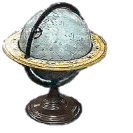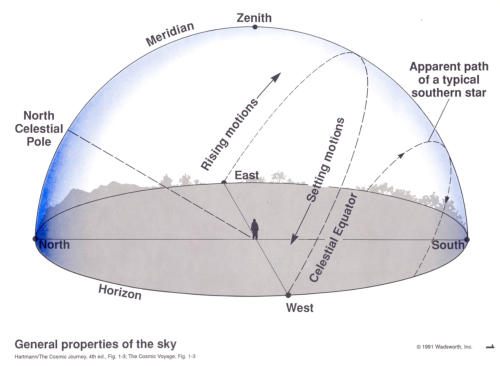When one looks at an illustration of the celestial sphere which seems
to surround the Earth, you see how the illusion of the dome works. Notice the
little observer at the center. That is you. Is this not the way the sky at least looks
to you? Well, maybe there are a lot more trees and buildings where you are. If you
look overhead you find the point called the zenith. Stretching from the north point on the
horizon through the zenith then down to the south point is half a circle called the upper
celestial meridian. Every celestial body must cross our meridian at some time or another.
When the Sun crosses our meridian, we call it noon. Note carefully that the Sun is not
directly overhead at noon, unless it is that one special day of the year and you live within
twenty-three degrees of Earth's equator.
Here is a site that allows you to download a number of nice simulations of the celestial
sphere. And, of course, depending on where you are on Earth, the Sun follows different
paths across the sky at diffrent times of the year.
This video covers a lot of the basic ideas for you. It is a nice review of the important
points on the sphere and their apparent motions.






















